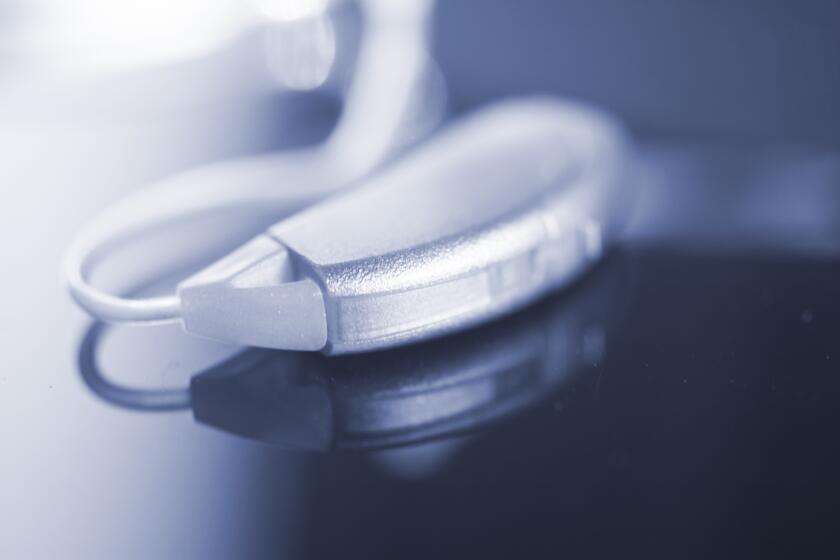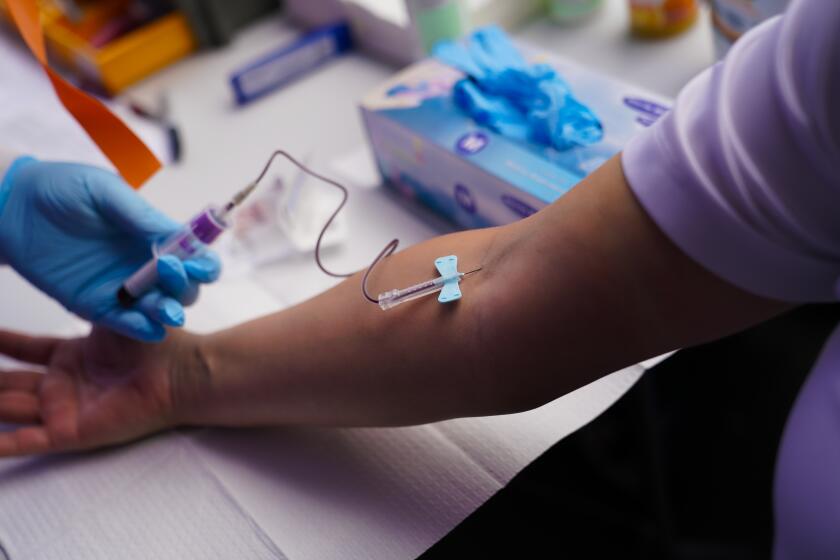Column: Walmart’s low-priced insulin shows what a rational drug market should look like
- Share via
For years, advocates of healthcare reform have been saying the market for prescription drugs is rigged, with powerful pharmaceutical companies setting prices at unreasonably high levels.
Drug companies steadfastly have insisted they don’t do that.
Thanks to Walmart, now we know for sure: They do.
The retail behemoth is introducing a private-label insulin this week called ReliOn NovoLog. The insulin also will be available at Sam’s Club stores by mid-July.
Walmart’s insulin costs about $73 a vial.
Insulin manufactured by the three pharmaceutical companies that otherwise control the market — Eli Lilly, Novo Nordisk and Sanofi — typically sells for more than $300 a vial.
Walmart’s version of the lifesaving drug is largely identical to insulins sold by the others. It’s a so-called analog insulin, meaning it’s the most effective, fastest-acting version, not some older formulation that doesn’t work as well.
Which raises a few questions. Such as, if Walmart can profitably sell insulin at a fraction of current prices, why hasn’t anyone else done so before now?
And if insulin can be mass-produced so cheaply, how has the drug industry gotten away with overcharging people for so long?
And why do lawmakers tolerate what looks an awful lot like collusion and price gouging?
It may cost as little as $100 to manufacture a hearing aid. The list price is typically in the thousands of dollars (and not covered by most insurance).
“Insulin has been the poster child for all that is wrong in the pharma industry,” said Geoffrey Joyce, director of health policy for USC’s Schaeffer Center for Health Policy and Economics.
“Insulin prices have increased much faster than most drugs and certainly other medical services,” he told me.
I’m not an innocent bystander here. I was diagnosed in 2007 with Type 1 diabetes and have relied on daily insulin injections ever since.
I’ve thus had, and continue to have, firsthand experience with the captive market for management of a chronic disease, and the myriad ways that drug companies and makers of medical devices exploit that market with prices that far surpass R&D and production costs.
They’re taking advantage of sick people, which is, to put it plainly, immoral.
“We know many people with diabetes struggle to manage the financial burden of this condition,” Dr. Cheryl Pegus, Walmart’s executive vice president of health and wellness, said in a statement. “We also know this is a condition that disproportionately impacts underserved populations.”
True on both counts. But Vivian Ho, director of Rice University’s Center for Health and Biosciences, told me Walmart isn’t being altruistic here.
“They’re doing this because they see a way to make money,” she said. “They realize that if they can get people with chronic diseases to go into their stores, those people will buy other stuff while they’re there.”
Mark V. Pauly, a professor of healthcare management at the University of Pennsylvania, also told me Walmart’s bargain-priced insulin “may be a PR or traffic-building exercise.”
But with a handful of companies now cornering the insulin market, he said, “it may take a chiseler like Walmart to break the gentleman’s agreement.”
Whatever Walmart’s motivation — and I applaud the company’s move — it’s worth emphasizing that Walmart’s version of state-of-the-art insulin is being produced in conjunction with Novo Nordisk.
Which makes me wonder why Novo didn’t roll out a similarly priced insulin on its own. The company’s NovoLog insulin was introduced in the United States in 2000 at a cost of less than $40 a vial.
It now lists for about $350 a vial, according to the drug-pricing site GoodRX. People with insurance pay less, but annual out-of-pocket costs for diabetes management still run into the thousands of dollars.
So what are we to think, that Novo Nordisk was unable to prevent the price of its insulin from rising by 775%, but somehow Walmart was able to wave a magic wand and cut the price by almost four-fifths?
As a person who relied on NovoLog for years until my insurer forced me to switch (for its own purposes) to Eli Lilly’s Humalog, I’m insulted and disgusted that Novo has abused me and millions of other people with diabetes for so long.
Lilly is even worse. It introduced Humalog in 1996 at a cost of about $20 a vial. Humalog now sells for roughly $334 a vial, according to GoodRX — a price increase of about 1,570%.
Keep in mind: Insulin was discovered by a trio of Canadian scientists in the 1920s. They sold the patent to the University of Toronto for a mere $1.
A vial of insulin is now more than 30,000% more expensive than the original cost of the patent.
A cancer patient paid about $200 for blood tests at a doctor’s office and nearly $2,000 for the same tests at a Los Angeles hospital. This is nuts.
According to the Mayo Clinic, insulin in the United States costs about 10 times what it costs in other developed countries.
“The No. 1 reason for the high cost of insulin is the presence of a vulnerable population that needs insulin to survive,” the Mayo Clinic’s Dr. S. Vincent Rajkumar wrote last year.
“This population, which numbers in the millions, is willing to pay anything to have access to a lifesaving drug. The desperate need for a lifesaving product allows insulin to be priced at high levels because it is not a luxury item that one can forgo.
“The manufacturers of insulin know that patients who need it will spend whatever it takes to acquire it, regardless of price,” Rajkumar concluded. “It is a matter of life and death.”
Alarmingly, some people with diabetes have been forced to ration their insulin doses, placing them at risk of medical complications and even death.
A 2019 study by the Centers for Disease Control and Prevention found that almost 1 in 7 of U.S. adults with diabetes weren’t using insulin as prescribed by their doctors because of the high cost.
This is an intolerable state of affairs for the richest, most medically advanced country on the planet.
None of the experts I spoke with believed Walmart’s unveiling of reasonably priced insulin will be followed by lower-priced alternatives to other drugs.
They said insulin was ripe for price disruption because it has attracted so much attention in recent years from feel-your-pain politicians.
They also pointed out that it takes a powerful retailer to move forward with something like this, and after Walmart the list gets very short. Perhaps only Amazon is in a similar position as it pushes deeper into the healthcare market.
Amazon makes online shopping easy and convenient, and keeps people coming back for more. The healthcare industry could learn a thing or two.
But what Walmart has shown is that when legitimate competition is introduced into the drug market, downward pressure is placed on prices.
The company also has demonstrated that allowing drug companies to behave in a monopolistic or oligopolistic fashion inevitably puts patients at a disadvantage.
If high barriers to entry prevent other businesses from competing in this space, then it’s up to lawmakers to protect the sick with commonsense regulations that prevent price gouging.
Allowing Medicare to negotiate drug prices on behalf of its 68 million beneficiaries would be a prudent first step toward rationalizing a drug market that for too long has operated with contempt for the people it claims to serve.
Thank you, Walmart, for showing how badly some people are being ripped off when it comes to medicine.
Let’s not end this here.
More to Read
Inside the business of entertainment
The Wide Shot brings you news, analysis and insights on everything from streaming wars to production — and what it all means for the future.
You may occasionally receive promotional content from the Los Angeles Times.














